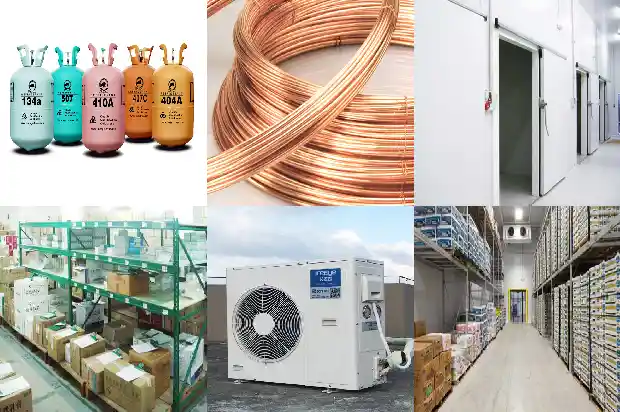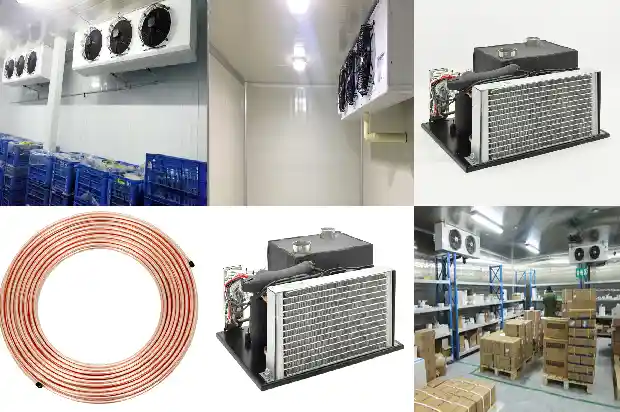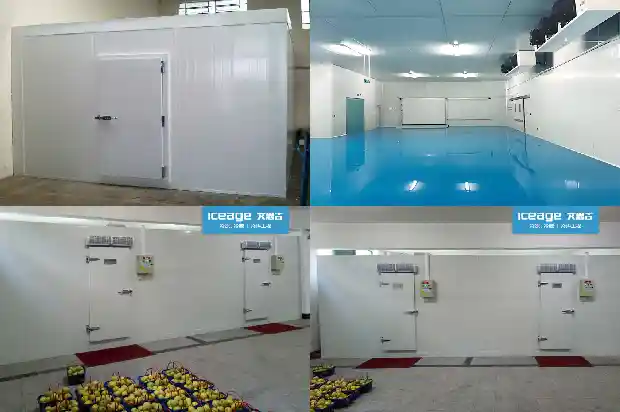Brief Introduction to the Working Principle of Lithium Bromide Absorption Refrigeration Unit
2025-04-15
Brief Introduction to the Working Principle of Lithium Bromide Absorption Refrigeration Unit
Working Conditions of the Lithium Bromide Absorption Refrigerator:
Working Conditions of the Lithium Bromide Absorption Refrigerator:
- The inside of the unit is in a nearly vacuum state.
- The lithium bromide aqueous solution has a strong water absorption capacity.
Why Can Heat Generate Chilled Water?
Water evaporates at 3-4 degrees under the condition of 7mmHg. The single-effect unit is mainly composed of an absorber, an evaporator, a generator, and a condenser.
The refrigerant water in the evaporator absorbs the heat of the chilled water in the system pipes and evaporates. It is absorbed by the concentrated lithium bromide solution in the absorber, and the concentration of the solution becomes diluted.
The diluted solution in the absorber is pumped into the generator by the solution pump. The solution is concentrated by steam heating, and the concentration becomes higher. The concentrated solution returns to the absorber to absorb the refrigerant water. The refrigerant vapor separated by evaporation is condensed by the cooling water and condenses into refrigerant water, which returns to the evaporator.
Basic Knowledge of the Physical Properties of the Lithium Bromide Solution (BrLi)
Lithium bromide is composed of two elements, the alkali metal element lithium (Li) and the halogen element (Br). Its general properties are roughly similar to those of table salt. It is a stable substance that does not deteriorate, volatilize, or decompose in the atmosphere, and is extremely soluble in water. At 20°C, its solubility in water is about three times that of table salt. It is a colorless granular crystal at room temperature, non-toxic, odorless, and has a salty and bitter taste.
The lithium bromide solution has a strong hygroscopicity. The lithium bromide solution has a very strong hygroscopicity and has the ability to absorb water vapor that is much lower in temperature than itself. Moreover, the lower the temperature of the lithium bromide solution and the higher the concentration, the stronger the water absorption ability.
The crystallinity of the lithium bromide solution. When the saturated aqueous solution of lithium bromide at a certain temperature decreases in temperature, due to the decrease in the solubility of lithium bromide in water, a crystallization phenomenon will occur, causing an accident. As the working medium of the unit, the lithium bromide solution should always be in a liquid state.
It is very important to prevent the solution from crystallizing both during operation and shutdown.
Anti-crystallization Protection (Taking a Certain Brand as an Example)
The lithium bromide solution is corrosive to metal materials. The lithium bromide solution has a corrosive effect on metal materials, and oxygen is the main factor promoting the occurrence of corrosion. Therefore, in the lithium bromide absorption unit, isolating oxygen is the most fundamental anti-corrosion measure.
Dual Automatic Air Extraction System
Factors Affecting the Corrosion of Metal Materials by the Lithium Bromide Solution
Several factors affecting the corrosion of metal materials by the lithium bromide solution include the concentration of the solution, the temperature of the solution, and the alkalinity of the solution. Among these, the temperature of the solution has the greatest impact on the corrosion effect. - The temperature of the solution.
When the temperature of the solution exceeds 180°C, the corrosion rate of the solution to metal materials increases sharply. Therefore, the temperature of the solution is not allowed to exceed 180°C. For steam-type units, there is a problem of steam superheat.
Regarding the problem of steam superheat:
When the steam pressure is 0.4MPa, the corresponding saturated steam temperature is 152°C;
When the steam pressure is 0.6MPa, the corresponding saturated steam temperature is 165°C;
When the steam pressure is 0.8MPa, the corresponding saturated steam temperature is 175°C; - The acidity and alkalinity of the solution.
When PH≤7 or PH≥10.5, the corrosion of the solution to metal materials intensifies. The best PH value is between 9 and 10.5.
In short, the analysis and adjustment of the lithium bromide solution are very important. The usual analysis should include the acidity and alkalinity of the solution and the concentration of the corrosion inhibitor. Therefore, the practice of adding the solution to the unit without any analysis and adjustment is extremely irresponsible to the user.
What is a Corrosion Inhibitor?
As the name implies, a corrosion inhibitor refers to an additive that is added to the solution. Under the action of a chemical reaction, it can form a protective film on the metal surface to reduce or delay the corrosion of the steel plate by the solution.
There are usually two types, lithium chromate (Li2CrO4) and lithium molybdate (Li2MoO4). Lithium molybdate (Li2MoO4) is selected as the corrosion inhibitor.
Corrosion Inhibition Mechanism
3Fe+4H2O+ Li2MoO4→Fe3O4+MoO2+2LiOH+3H2
It can be seen from this that the corrosion inhibitor will be consumed after being added to the unit, and the acidity and alkalinity of the solution will also change. Therefore, in future service work, the solution should be analyzed and adjusted.
Structural Composition of the Absorption Refrigerator
It is composed of an evaporator, an absorber, a low-temperature generator, a high-temperature generator, a condenser, a high-low temperature heat exchanger, a canned motor pump, a vacuum pump, a control panel, a burner, a condensate heat exchanger, a condensate drain, a steam regulating valve, and an automatic air extraction device. - Evaporator E
The evaporator is the place where the unit produces chilled (warm) water. It is a shell-and-tube heat exchanger with a spray structure inside, and the heat exchange tubes are high-efficiency heat exchange tubes. The refrigerant water is sprayed onto the outer surface of the heat exchange tubes by the refrigerant pump and continuously evaporates, absorbing the heat of the circulating water in the tubes and reducing its temperature. The main components include tube sheets, heat transfer tubes, support plates, spray headers, and nozzles. - Absorber A
The absorber, like the evaporator, is also a shell-and-tube heat exchanger with a spray structure inside, and the heat exchange tubes are bare copper tubes. The refrigerant vapor coming from the evaporator through the liquid baffle is absorbed by the sprayed concentrated solution, and the concentrated solution becomes a diluted solution, releasing heat at the same time. The heat is carried away by the cooling water flowing in the heat exchange tubes. The main components include tube sheets, heat transfer tubes, support plates, spray headers, nozzles, and air extraction headers. - Low-temperature Generator G2
The low-temperature generator is also a shell-and-tube heat exchanger with a spray structure inside.
The diluted solution is sprayed onto the outer surface of the heat exchange tubes. The refrigerant vapor generated by the high-temperature generator flows inside the heat exchange tubes, heating the diluted solution, and at the same time flowing towards the condenser together with the generated refrigerant vapor. The main components include tube sheets, heat transfer tubes, support plates, spray headers, and nozzles.
- Condenser C
The condenser is also a shell-and-tube heat exchanger. The refrigerant vapor coming from the generator condenses into refrigerant water on the surface of the heat exchange tubes, and the released heat is carried away by the cooling water flowing in the heat exchange tubes. The main components include tube sheets, heat transfer tubes, and support plates. - High-temperature Generator G1
The high-temperature generator is a very crucial component of the absorption refrigerator and is usually made into a single unit.
It is mainly composed of a cylinder, tube sheets, heat exchange tubes, etc.
Related Articles
- Introduction to the Construction Technology of Garlic Fresh - keeping Warehouse
- Introduction to the Installation Process of Marine Prefabricated Cold Storage
- Introduction: Ten Key Points Every Refrigeration Professional Should Know
- Introduction to Cold Storage Refrigeration Systems
- Introduction to Energy - saving Methods of Cooling Towers
- Introduction to the Application of End - product, Fan and Motor Characteristics (Fan - coil Unit Section)
- Comprehensive Introduction to Chilled Water Systems of Large - scale Central Air - conditioners
- Introduction to Inspection and Handling Methods for Refrigerant Leak in Cold Storage
- Introduction to Control Valves in Refrigeration Systems
- Introduction to Basic Types of Cold Storage
- Introduction to Lithium Bromide Absorption Chillers
- Introduction to the Advantages of Dual - temperature Cold Storage
- Introduction to Various Water Tanks in Air - conditioning Systems
- Introduction to the Cleaning Processes and Methods of Heat Exchangers and Cooling Towers
- Introduction to Six Kinds of Two-stage Compression Refrigeration Systems
- Introduction to Key Points of Compressor Grouping in Quick-freezing Cold Storage
- Introduction to the Construction and Features of Cold Storage in Cold Chain Logistics
- All-round Introduction to Condensers and Evaporators!
